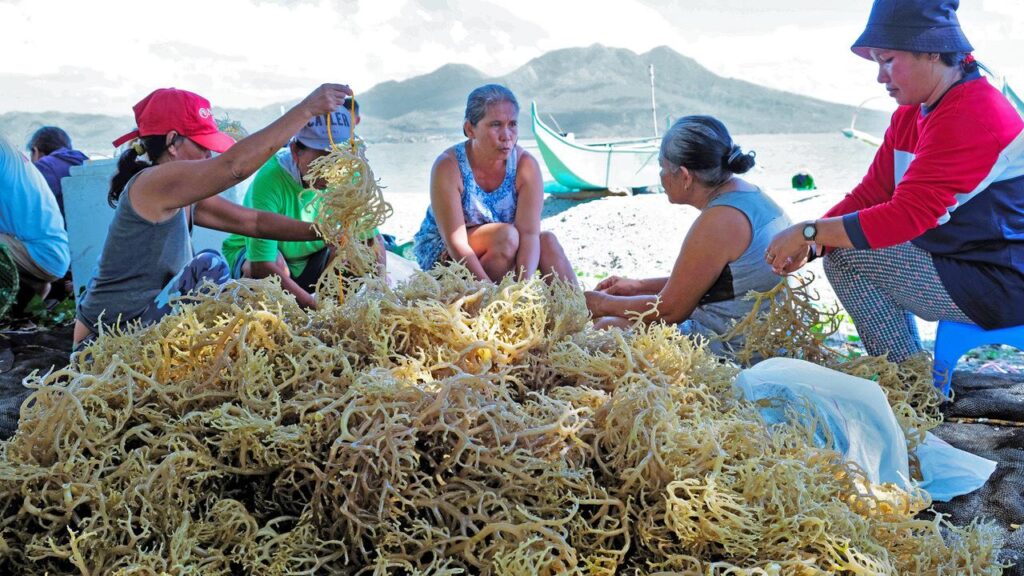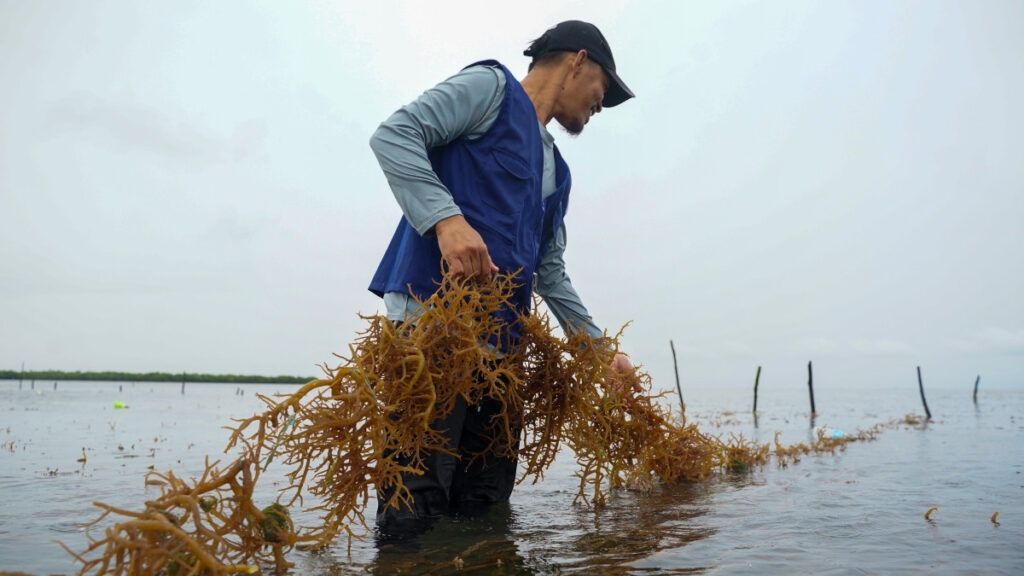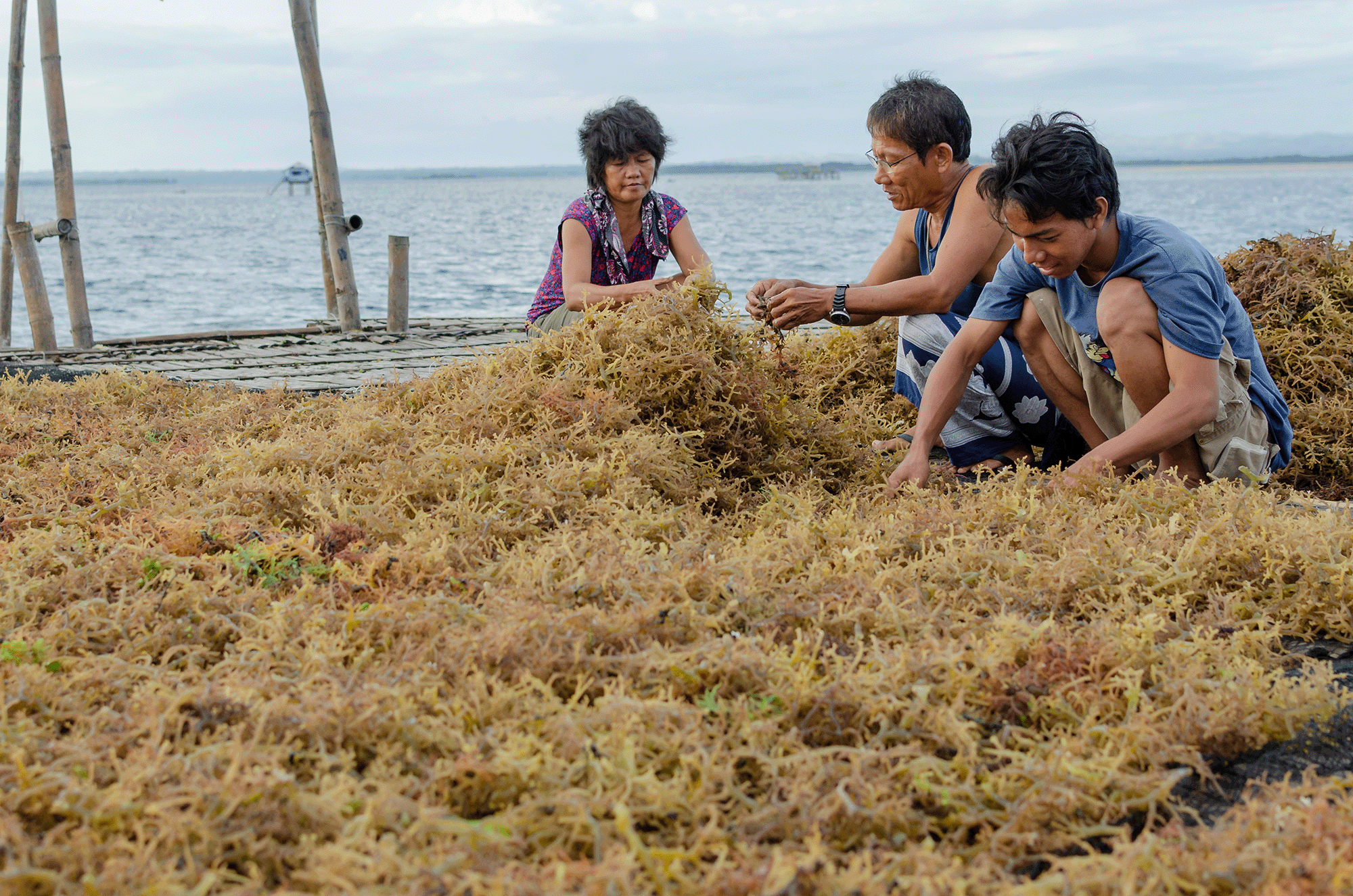Food & Climate
Seaweed in the Philippines is concentrated in the province of Tawi-Tawi, so it is called the capital of this industry. Agal-agale farming, the local name for euchemia and kappaphycus seaweeds, is their sole livelihood. But climate change and the rising temperatures that are leading to the spread of ice-ice disease are threatening the livelihoods of producers.
Women and men work together to harvest seaweed in the Philippines in the Celebes Sea off a small island in the Asian country. The men harvest the seaweed, the women receive it, and then prepare it for sale.
For many people, the importance of seaweed isn’t as obvious as the importance of the fish catch or the harvested crops. But for producers in the Philippine province, it’s their only livelihood, according to a report that received by “Food & Climate‘.
“I learned seaweed farming at an early age. My parents and my husband’s family were skilled seaweed farmers in the Philippines, and it has always been our primary means of livelihood in this area”, said Imilita Mawaldani Hikanti, who was with a group of other women processors.
Challenges of Seaweed in the Philippines
Prducing seaweed in the Philippines faces several challenges, such as increased incidences of plant diseases and the state of the local market, which limit the likelihood of this livelihood being passed down from generation to generation in Tawi-Tawi Province.
The province produces about 40% of the country’s annual production of 600,000 tons. The seaweed was primarily exported for the production of carrageenan, which is used in food processing.
Carrageenan helps improve the texture and consistency of many food products, including dairy products such as ice cream and yogurt, processed meats, sauces, and desserts. Carrageenan thickener is approved for use in food products in many countries and is considered safe when used within regulatory limits.
The prices of seaweed in the Philippines have fluctuated significantly in recent years. Competition from abroad has caused local prices for raw dried seaweed to fall to PHP 25 per kilogram (approximately US$0.44) in 2024, meaning farmers are making losses.

Due to these losses, some resort to unsustainable practices to survive, such as cutting down mangroves for charcoal, spearfishing, and collecting rocks from the seabed to crush them into gravel. Another problem is ice-ice sickness, according to Siulay Johan, a seaweed farmer from the same province.
Ice-ice sickness is a bacterial infection caused by rising sea temperatures due to climate change, forcing farmers to either quickly harvest the crop before it deteriorates or discard it.
Expanding Opportunities
The Food and Agriculture Organization of the United Nations (FAO) has stepped in to help protect seaweed producers in the Philippines, in partnership with the Bangsamoro Regional Government in the south of the country, the International Organization for Migration (IOM), and the International Trade Centre.
These organizations are working on the Farmers’ Empowerment and Integration into Resilient Value Chains (FAIR VALUE) project. Funded by the European Union and implemented in the Bangsamoro Autonomous Region in Muslim Mindanao, the project aims to improve seaweed production, value chains, and marketability.
Although seaweed uses span the food, industry, agriculture, and energy sectors, not all farmers are familiar with these markets; therefore, the training begins with a fresh look at its potential for them.
The hands-on training program enhances skills in sustainable farming, climate-smart technologies, and transforming seaweed into high-value products.
Participants learn various skills, including preparing planting material and setting up a farm from scratch. They also learn from each other through Farmer Field Schools. Profitable seaweed farming isn’t just about farming it properly; handling it correctly is also crucial.
Participants attended an intensive course on different seaweed markets, pricing, distribution, and how to make their products more competitive.

“This training provides opportunities to improve the business knowledge of Philippine seaweed farmers, equipping them with the skills to overcome the challenges of modern seaweed farming and marketing, as well as contributing to a more sustainable and economically viable future for the people of Tawi-Tawi,” said Lionel Dabbadie, FAO Representative in the Philippines and aquaculture expert.
The training also enables seaweed farmers to explore opportunities for other products. This includes seaweed-based pasalubong, a traditional Filipino travel souvenir, and local delicacies.
For farmers, exploring new ways to boost their income beyond selling raw seaweed is crucial to reducing their dependence on the carrageenan market.
Alternative markets include, for example, the sale of seaweed for the production of biostimulants or food products such as seaweed flakes. The organization facilitates connections between farmers and producers of these alternative products.

